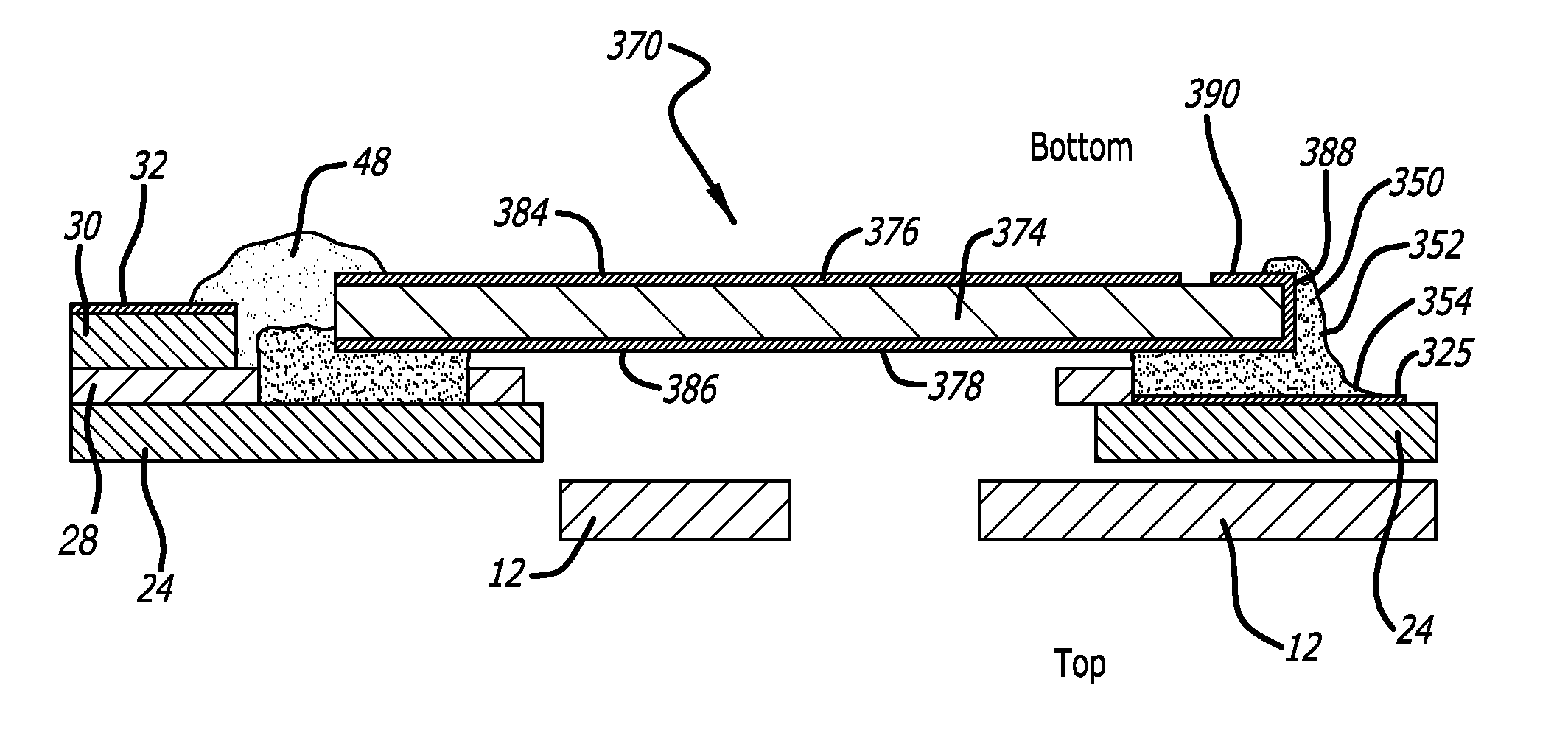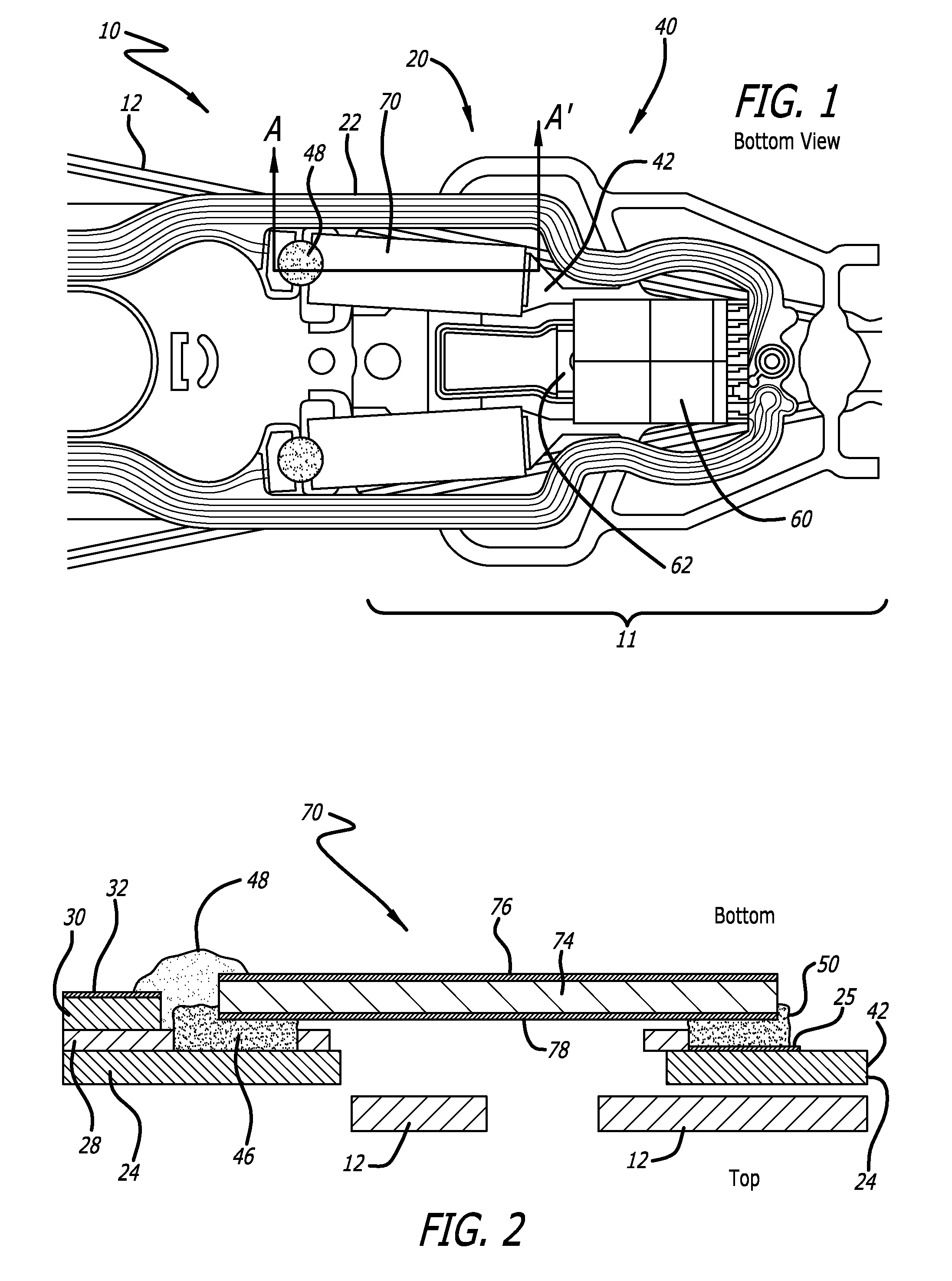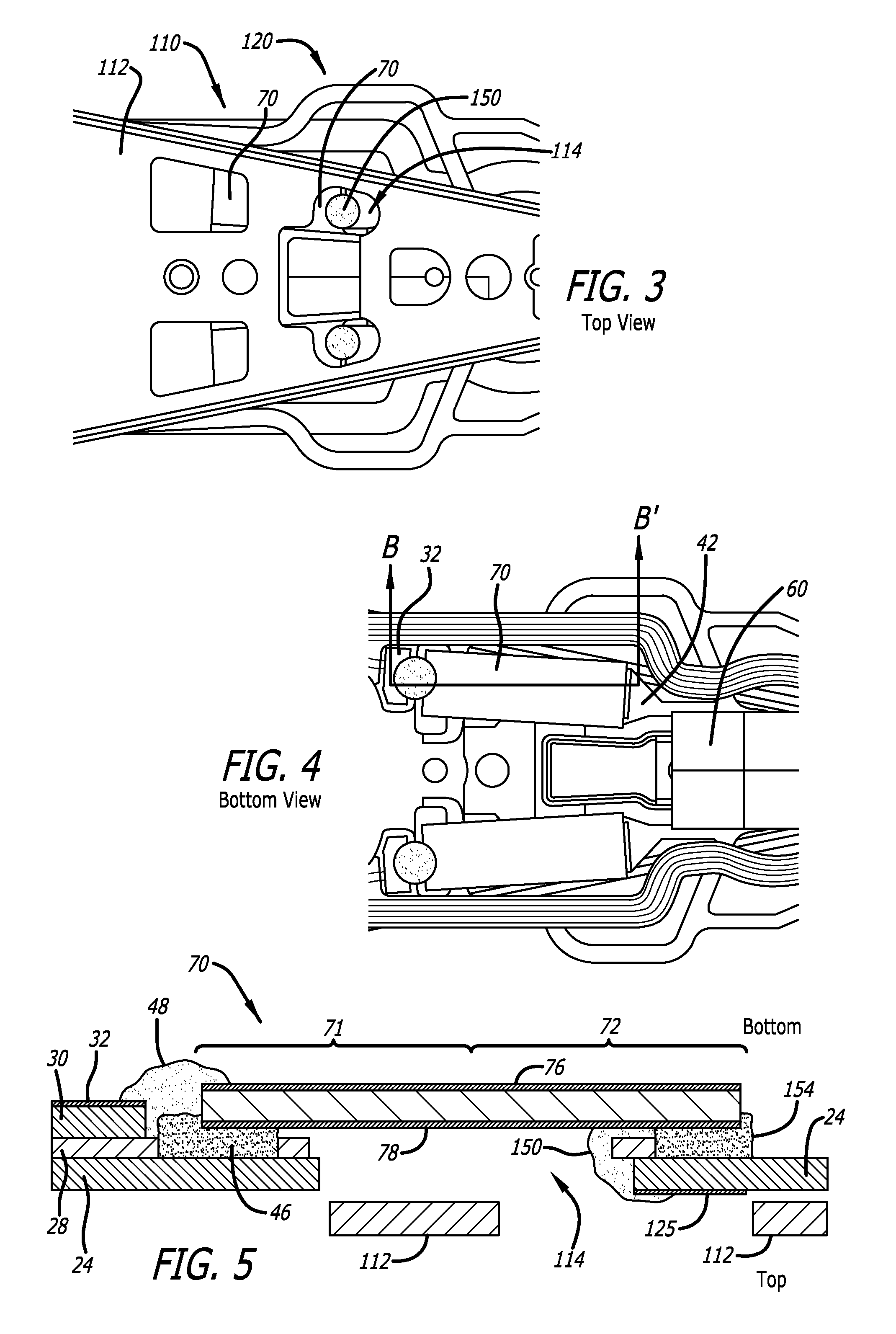Microactuator bonding having increased adhesive exposure for more thorough adhesive cure
a microactuator and bonding technology, applied in the direction of magnetic recording, instruments, data recording, etc., can solve the problems of insufficient curing of conductive epoxy b>50/b>, which can produce grounding degradation or even failure during epoxy fatigue reliability testing, and achieves the effect of improving the quality of conductive epoxy bonding and resistance ground connection
- Summary
- Abstract
- Description
- Claims
- Application Information
AI Technical Summary
Benefits of technology
Problems solved by technology
Method used
Image
Examples
first embodiment
[0036]FIG. 3 is a top plan view of a GSA suspension 110 of the invention and FIG. 4 is a bottom plan view thereof. Load beam 112 has been modified to provide an aperture 114 therein so that the new ground electrical connection 150 can be accessed for curing such as by directing a stream of hot air onto it for a thermally curing epoxy, or by shining UV light onto it for a UV-curing epoxy, or other exposure for other types of curing depending on the type of electrically conductive adhesive employed.
[0037]FIG. 5 is a sectional view of the GSA suspension of FIG. 4, taken along section line B-B′. In the figures, the PZT grounding has been modified. Specifically, the electrical bridge of conductive epoxy 150 that defines the grounding bridge at distal end 72 of PZT 70 is applied through the aperture or opening 114 in load beam 112 to create the electrical connection between the PZT top electrode 78 and a gold plating layer that defines a gold plated grounding pad 125 on the top surface o...
third embodiment
[0046]FIG. 10 is a sectional view of a third embodiment that employs a PZT 370 having a wrap-around electrode. PZT 370 has a PZT element 374, a bottom metalized surface 376 covering a majority 384 of its bottom surface and defining a first and driven electrode, and a second and ground electrode 378 that includes both a top surface 386 and either a side end 388 of PZT 370 and / or minority portion 390 of the PZT's bottom surface. As used herein, the term “wrap-around electrode” means an electrode that electrically extends from a first face to at least either the side end of the device, or to an opposite face of the device, or both. PZTs having such wrap-around electrodes are generally well known. Recent improvements in such devices and in methods of manufacturing such devices, and which could be employed in this embodiment, are disclosed in U.S. Pat. No. 8,773,820 issued to Hahn et al. and pending U.S. application Ser. No. 14 / 316,633 by Hahn et al., both assigned to the assignee of the...
PUM
| Property | Measurement | Unit |
|---|---|---|
| conductive | aaaaa | aaaaa |
| hardenable conductive | aaaaa | aaaaa |
| track densities | aaaaa | aaaaa |
Abstract
Description
Claims
Application Information
 Login to View More
Login to View More - R&D
- Intellectual Property
- Life Sciences
- Materials
- Tech Scout
- Unparalleled Data Quality
- Higher Quality Content
- 60% Fewer Hallucinations
Browse by: Latest US Patents, China's latest patents, Technical Efficacy Thesaurus, Application Domain, Technology Topic, Popular Technical Reports.
© 2025 PatSnap. All rights reserved.Legal|Privacy policy|Modern Slavery Act Transparency Statement|Sitemap|About US| Contact US: help@patsnap.com



